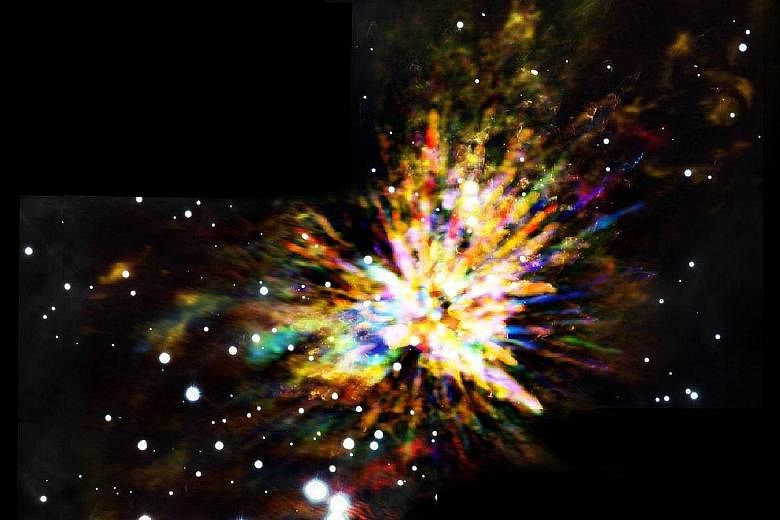The birth of a star can be a violent and explosive event. Around 500 years ago, a pair of young stars had a close encounter that blasted them apart. This event has been recorded by astronomers using the Atacama Large Millimetre/submillimetre Array (Alma), a gigantic array of radio telescopes situated in the famous high-altitude Chilean desert. Shortly after starting to form some 100,000 years ago in a bustling "star factory" about 1,500 light-years from earth, several protostars gradually drew closer due to gravity. Two of them collided, triggering a powerful eruption that launched other protostars and hundreds of giant streamers of dust and gas into space at speeds greater than 150km per second. This event is relatively short-lived, taking centuries to play out, but releasing as much energy as the sun does over 10 million years. The Alma image, in colours indicating the relative speeds of the particles, is combined with a near-infrared image from another telescope, which shows shock waves produced by the explosion.
Beautiful Science

Join ST's Telegram channel and get the latest breaking news delivered to you.
A version of this article appeared in the print edition of The Straits Times on April 14, 2017, with the headline Beautiful Science. Subscribe
